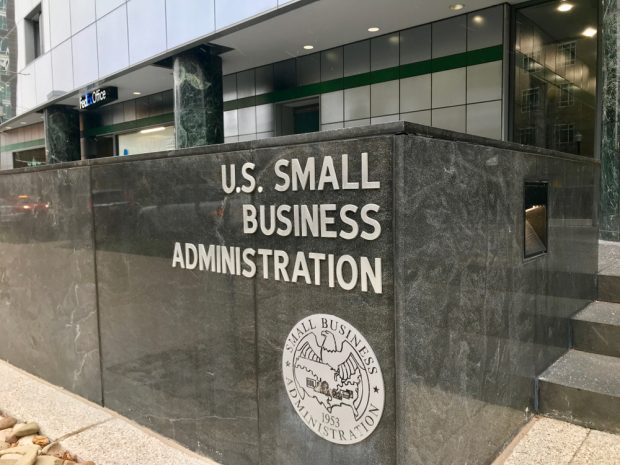 Small Business Administration headquarters building entrance (Image: Shutterstock).
Small Business Administration headquarters building entrance (Image: Shutterstock).
The Small Business Administration's oversight of the Paycheck Protection Program is slowly improving, but serious gaps in management of the loan program continue to put billions of dollars at risk, witnesses told a House committee Tuesday.
"In March 2021, we found that SBA had taken some steps to mitigate fraud risks to PPP," William Shear, director of the Government Accountability Office's Financial Markets and Community Investment division, told the House Small Business Committee.
Recommended For You
Shear said SBA officials said they had conducted an informal risk assessment of the PPP and had identified some controls that are being implemented. However, Shear said that the agency has not provided a firm date for when a formal risk review process would be in place.
The GAO and other agencies acknowledged that the coronavirus PPP program was quickly launched last year in an effort to provide small businesses with financial support as the pandemic raged. Since then, the GAO and the SBA's Inspector General have detailed problems with the program, ranging from approval of multiple loans to the same business to loans made to firms that were on the Treasury Department's "Do Not Pay" list.
Some of those problems continue to exist, Shear said.
And this week, CUNA and NAFCU officials wrote letters to House members outlining continuing problems with the PPP program.
The House hearing came as the SBA released updated loan data. The agency said that 841 credit unions with assets under $10 billion have made 130,743 PPP loans this year, totaling almost $4.7 billion. The agency said that eight credit unions with assets of more than $10 billion have made 13,580 loans, totaling $412 million.
Shear told the committee that the SBA has developed a loan review process and added "up-front verifications" before loans are made. The agency also has developed a plan for the testing necessary to estimate improper loan payments.
SBA Inspector General Hannibal "Mike" Ware told the committee that even though the agency formally disagreed with some recommendations made by his office, the SBA is implementing many of the suggestions.
However, CUNA President/CEO Jim Nussle said the program continues to have a backlog of loan forgiveness applications. He said that under SBA rules, a decision about loan forgiveness is supposed to be made within 90 days after the application is received. Despite that rule, many businesses and lenders are waiting for forgiveness decisions well past the 90-day requirement.
"While we understand there is a high volume of loan forgiveness applications, small businesses and financial institutions need certainty on the status of their applications," he told leaders of the House Small Business Committee in a letter.
"We have heard from many of our members that the loan forgiveness process is still in need of administrative simplification and there has been an inconsistency in the length of time SBA is taking to administer forgiveness," NAFCU Vice President of Legislative Affairs Brad Thaler wrote in a letter to the House members.
© 2025 ALM Global, LLC, All Rights Reserved. Request academic re-use from www.copyright.com. All other uses, submit a request to [email protected]. For more information visit Asset & Logo Licensing.






